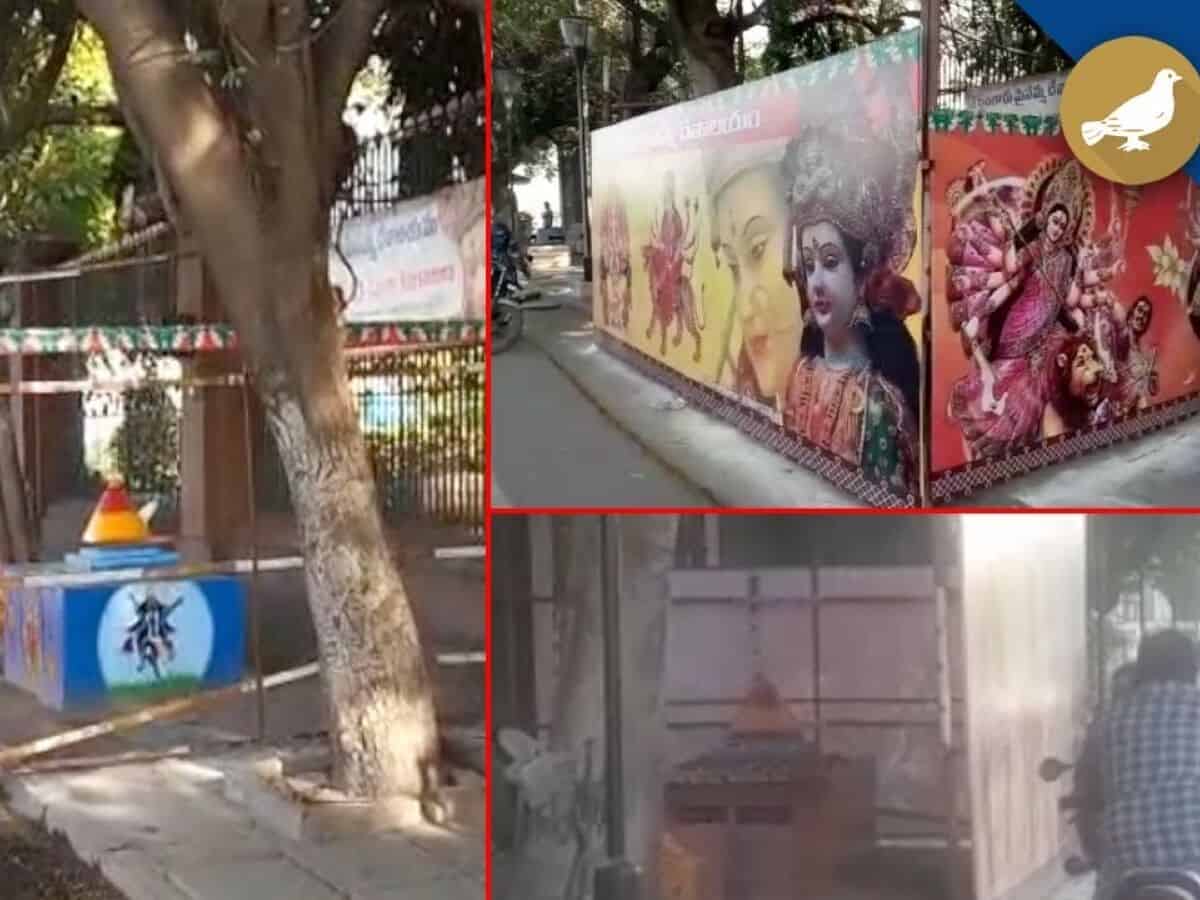
Hyderabad: Authorities have foiled an unauthorized attempt to expand a temple located at Salar Jung Museum’s entrance. The officials came into action after a report by Siasat Daily highlighted the encroachment of footpath for the expansion.
Soon after the report went viral, officials removed the flexes used for the expansion of the temple.
It is not the first time, earlier too attempts were made to expand the temple at the entrance of the Salar Jung Museum.
Bhagyalaxmi temple at Charminar
It is no secret that the Bhagyalaxmi temple’s existence on the historic Charminar is a matter of dispute.
The Archaeological Survey of India (ASI) has in fact on more than one occasion maintained that the temple on the Charminar is unauthorised. The Bhagyalaxmi temple came up in the 1960s, and has since been there. The monument was built in 1591 as Hyderabad’s foundation by Mohd Quli Qutb Shahi, the city’s founder.
Apart from it, right-wing groups in Hyderabad also use the temple to spread rumours that the city was called Bhagyanagar
Salar Jung Museum
It is an art museum located at Dar-ul-Shifa. The museum has a collection of sculptures, paintings, carvings, textiles, manuscripts, ceramics, metallic artifacts, carpets, clocks, and furniture from various countries.
It was the prime minister of erstwhile Hyderabad Nawab Mir Yousuf Ali Khan who collected artifacts from all over the world. Later, the artifacts were kept at Diwan Devdi.
On December 16, 1951, the then Prime Minister of India Jawaharlal Nehru inaugurated the private museum at Diwan Devdi.
Later, it was shifted to the current located and administered by a board of trustees. Salar Jung Museum Act of 1961 was also enacted.
Gallery at the museum
The present museum building has 38 galleries that are spread over two floors. Each gallery exhibits artifacts as old as ones from the fourth century.
The collections at the museum include art objects, manuscripts, and printed books. It also has autographed manuscripts with seals and signatures of Mughal Emperors.
Apart from it, there are reference library, reading room, publication and education section, chemical conservation lab, sales counter, cafeteria etc.
